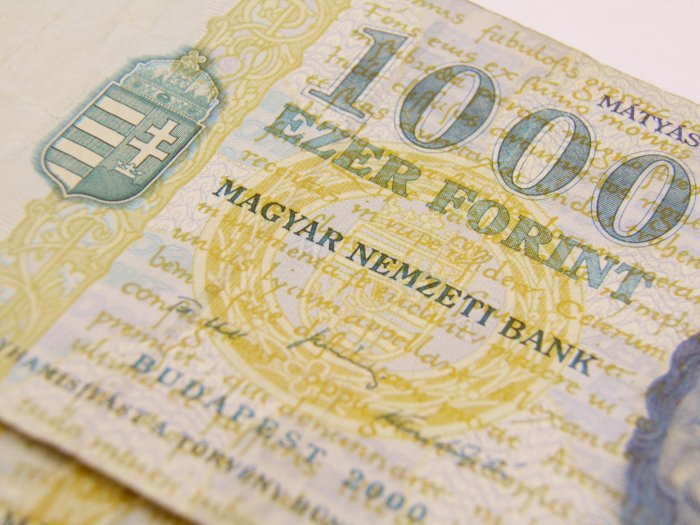Forint fairly stable versus euro, dives in dollar

The forint was trading at to 312.31 the euro late Wednesday on the interbank forex market, slightly down from final quotes at 311.97 on Tuesday. At 312.03 to the euro early Wednesday, the forint moved between 311.66 and 312.65, a nine-day low, after an almost one-month high at 308.43 last Friday intraday.
The Hungarian currency tumbled in tandem with the euro against the dollar after Reuters, quoting unnamed officials, aired some possible striking directions in the widening of the European Central Bankʼs (ECB) quantitative easing program, expected for early December.
On the longer term, analysts views widely differ on the outlook for the forint.
A research of ZEW and Erste Bank showed about 38pc of 52 regional analysts and fund managers surveyed forecast weaker forint to the euro on a six-month horizon, another about one-third expects the course should remain broadly unchanged, and more than 28% said the forint could strengthen.
Arguments center around possible upgrades of Hungary to investment level by the major rating agencies next year which, together with Hungaryʼs external balances, should support the forint, and differing expectations for the stance of the National Bank of Hungary (MNB) which could be detrimental for the currency.
Lately, Goldman Sachs and Commerzbank penciled in 325 to the euro by the end of next year on account of the expected US rate hike which should cut the risk premium of Hungarian sovereigns, and their expectation for MNB action.
But Credit Agricole does not believe the MNB would be interested in a serious fall of the forint. They calculate 300 to the euro over six months, and 295 by the end of next year.
Danske Bank expects a course of 300 to the euro within one year.
The forint traded at 294.52 to the dollar, down from final quotes at 293.12 on Tuesday. On Wednesday, it moved between 292.18 and 295.29, a second more than fifteen-year low this month, and further away from a ten-day high at 287.97 reached last Thursday.
It was quoted at 287.83 to the Swiss franc, up from 288.20 late Tuesday. Its range on Wednesday was 287.49 to 288.73, after a six-day low at 288.84 on Tuesday intraday. Since its crash to an all-time low at 378.49 to the franc on January 15 when the Swiss central bank scrapped its cap of 1.20 to the euro, it reached the highest at 281.07 on February 26.
SUPPORT THE BUDAPEST BUSINESS JOURNAL
Producing journalism that is worthy of the name is a costly business. For 27 years, the publishers, editors and reporters of the Budapest Business Journal have striven to bring you business news that works, information that you can trust, that is factual, accurate and presented without fear or favor.
Newspaper organizations across the globe have struggled to find a business model that allows them to continue to excel, without compromising their ability to perform. Most recently, some have experimented with the idea of involving their most important stakeholders, their readers.
We would like to offer that same opportunity to our readers. We would like to invite you to help us deliver the quality business journalism you require. Hit our Support the BBJ button and you can choose the how much and how often you send us your contributions.









